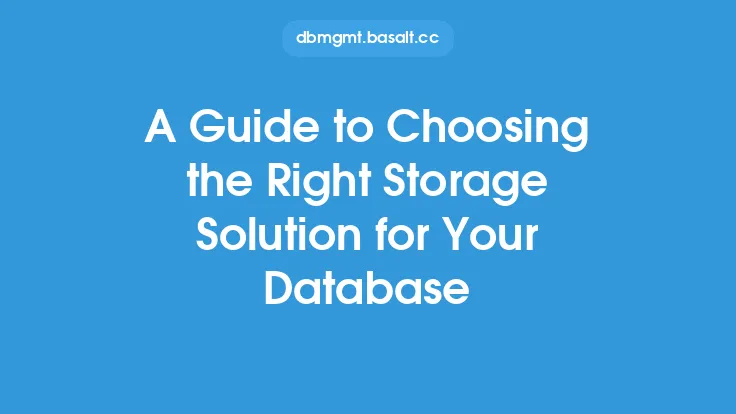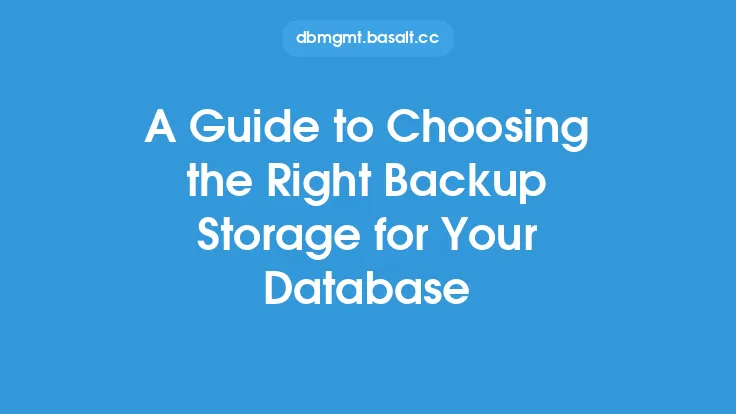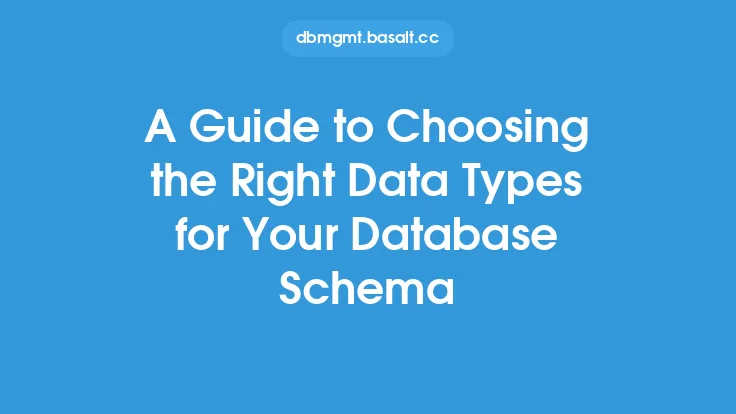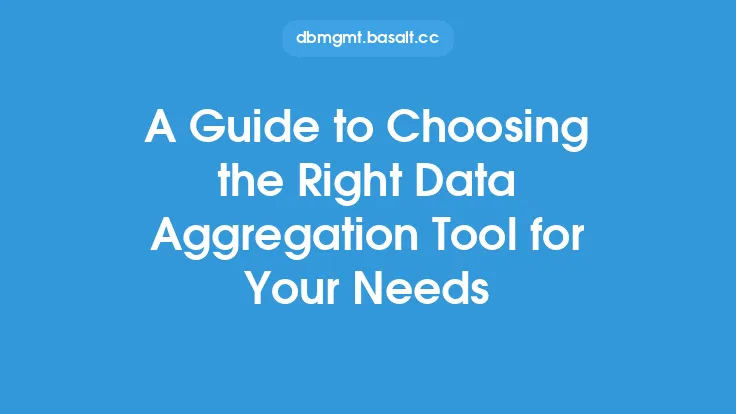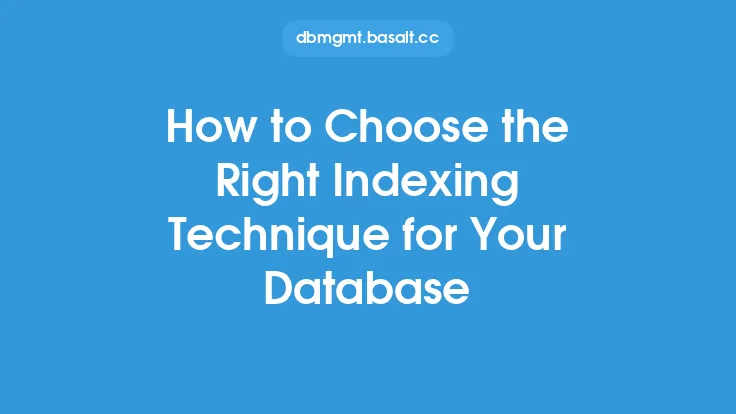When it comes to building an application, one of the most critical decisions you'll make is choosing the right database. Your database will serve as the foundation for your application's data storage and management, and selecting the wrong one can lead to performance issues, scalability problems, and even data loss. With so many database options available, it can be overwhelming to decide which one is best for your application. In this article, we'll provide a comprehensive guide to help you navigate the process of selecting the right database for your application.
Understanding Database Types
There are several types of databases, each with its own strengths and weaknesses. Relational databases, such as MySQL and PostgreSQL, use a fixed schema to store data in tables with well-defined relationships. They're ideal for applications that require complex transactions, data consistency, and adherence to a strict schema. NoSQL databases, on the other hand, offer more flexibility in their schema design and are often used for big data and real-time web applications. Examples of NoSQL databases include MongoDB, Cassandra, and Redis. Graph databases, such as Neo4j, are designed to store and query complex relationships between data entities, making them suitable for applications that require advanced data modeling. Time-series databases, like InfluxDB, are optimized for storing and querying large amounts of time-stamped data, making them a good fit for applications that require real-time analytics.
Evaluating Database Features
When selecting a database, it's essential to evaluate its features and ensure they align with your application's requirements. Some key features to consider include data types, indexing, querying, and data retrieval. You should also consider the database's support for transactions, concurrency, and data consistency. Additionally, think about the database's scalability, performance, and reliability, as well as its support for security, authentication, and authorization. It's also crucial to evaluate the database's compatibility with your application's programming language and development framework.
Database Scalability and Performance
Scalability and performance are critical considerations when selecting a database. You should consider the database's ability to handle increasing amounts of data, user traffic, and query complexity. Look for databases that offer horizontal scaling, load balancing, and distributed architecture to ensure your application can handle growth and high traffic. You should also evaluate the database's query performance, indexing capabilities, and caching mechanisms to ensure fast data retrieval and minimal latency. Consider the database's support for parallel processing, multi-threading, and asynchronous queries to improve performance and responsiveness.
Database Security and Backup
Database security and backup are vital aspects of database selection. You should consider the database's support for encryption, access control, and authentication to ensure your data is protected from unauthorized access. Look for databases that offer robust backup and recovery mechanisms, such as point-in-time recovery, incremental backups, and data replication. You should also evaluate the database's support for auditing, logging, and monitoring to detect and respond to security threats. Consider the database's compliance with industry standards and regulations, such as GDPR, HIPAA, and PCI-DSS, to ensure your application meets the required security and privacy standards.
Database Support and Community
The level of support and community involvement can significantly impact your database selection decision. Look for databases with active and engaged communities, extensive documentation, and responsive support channels. Consider the database's vendor support, including their reputation, reliability, and commitment to ongoing development and maintenance. You should also evaluate the database's compatibility with popular development tools, frameworks, and libraries to ensure seamless integration with your application. Think about the database's extensibility, customizability, and support for plugins and extensions to ensure you can adapt it to your specific needs.
Database Cost and Licensing
The total cost of ownership and licensing model can significantly impact your database selection decision. Consider the database's licensing fees, support costs, and any additional expenses, such as hardware or infrastructure requirements. Look for databases with flexible pricing models, including open-source, free, or subscription-based options. You should also evaluate the database's cost-effectiveness, considering factors such as performance, scalability, and reliability. Consider the database's support for cloud deployment, containerization, and serverless architecture to reduce costs and improve efficiency.
Conclusion
Choosing the right database for your application is a critical decision that requires careful consideration of several factors, including database type, features, scalability, performance, security, support, and cost. By understanding the different types of databases, evaluating their features, and considering your application's specific requirements, you can make an informed decision that ensures the success and reliability of your application. Remember to prioritize scalability, performance, and security, and don't hesitate to seek advice from experts or conduct thorough research to ensure you're making the best choice for your application. With the right database in place, you'll be able to build a robust, efficient, and scalable application that meets the needs of your users and drives business success.
